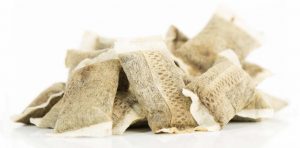Snus
What is snus?
Swedish snus is a moist, finely ground tobacco product usually supplied in sachets like small teabags which are placed under the upper lip.

Nicotine from snus is slowly absorbed through the lining of the mouth, delivering nicotine levels about twice as high as other nicotine replacement therapy (NRT) such as nicotine patch or gum, and similar to the levels from smoking. Studies show that the nicotine levels in the blood rise more quickly with the use of snus than from NRT, but are still slower than from smoking.
Modern snus is the most popular quitting aid in Sweden and Norway especially among men, and has been a major contributor to reducing smoking rates in those countries. The daily smoking rate in Sweden is now 5%, compared to 12.8% in Australia.
Is it safer than smoking?
Snus is considered by scientists to be at least 90% and possibly closer to 99%, less risky than smoking. A comprehensive review of the health effects of snus in 2011 found no evidence of any significant harmful effects. In particular, there was no evidence of increased cancer, heart disease or stroke. The authors concluded that the risks associated with the use of snus were are ‘probably about 1% of that from smoking’.
The tobacco in snus is pasteurised to remove most of the tobacco toxins. In particular, snus has low levels of nitrosamines, the main cause of mouth cancer from other tobacco products. A recent review found no increased risk of mouth cancer from snus, unlike other oral tobacco products used in the US and South Asia.
There were concerns that snus may increase rates of pancreatic cancer, however a comprehensive review in 2017 found no evidence for this.
Current smokers who switch to using snus rather than continuing to smoke can expect to reduce their risk of disease and death from smoking. Studies have shown that Swedish men have by far the lowest rates of lung cancer and other smoking-related disease compared to other European countries.
The Snus Commission has calculated that if snus was available in the other countries of the European Union, 355,000 lives could be saved per year among men over the age of 30 years.
This safety profile is to be expected as most of the harm from smoking comes from the thousands of toxins, carcinogens and other chemicals from burning tobacco. However, there is no combustion or smoke with the use of snus.
Snus contains nicotine which has addictive properties.
Is it effective?
Randomised controlled trials of snus have shown it to be an effective quitting aid.
In Sweden, snus has been reported to be the most effective quitting aid when compared to nicotine replacement therapy or any other treatment. Smokers who use snus as a cessation aid have a substantially higher success rates than other therapies.
Studies in Norway have also found that daily snus use is ‘associated with a particularly high quit rates for smoking’. Both male and female smokers who used snus daily had the highest quit rates compared to those who used other methods.
However, after quitting smoking, about 2 in 3 people do continue to use snus long-term.
Is it legal?
All smokeless tobacco products, including snus, are banned from sale in Australia. The use and supply of snus is regulated under Federal law and differently in each state and territory.
Australians are permitted to import snus for personal use but need to comply with the relevant laws and regulations in their jurisdiction. We recommend discussing your needs with your treating medical practitioner.